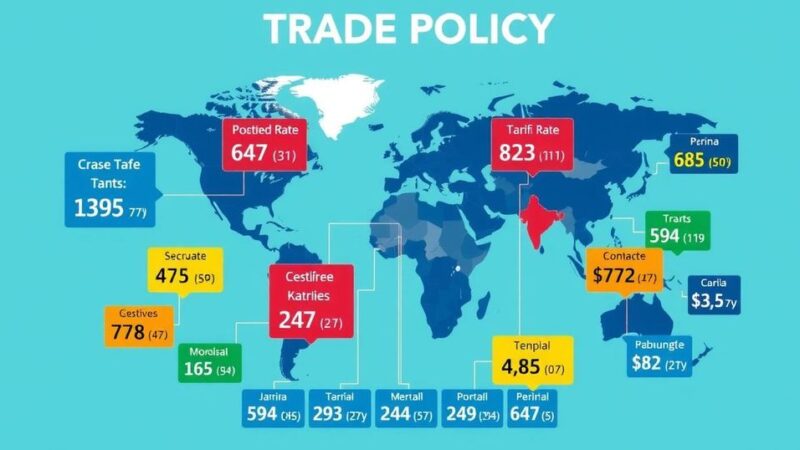Oil prices stabilized on Wednesday after a recent decline fueled by concerns over new U.S. tariffs. Brent crude futures settled at $74.49 and WTI rose to $71.23. Analysts express caution due to low trading volumes and uncertainties regarding President Trump’s tariff announcements set for April 2. Inventory data reflects a mixed supply and demand outlook.
Oil prices exhibited stability on Wednesday following a decline in the previous session, with apprehensions surrounding potential new U.S. tariffs raising fears of a global trade war that could diminish crude oil demand. Brent crude futures were noted at $74.49 per barrel, reflecting a drop of 0.4% from Tuesday’s figures, while U.S. West Texas Intermediate (WTI) crude futures saw a slight increase of 3 cents, rising to $71.23 after also declining by 0.4%. The prices had peaked at the highest levels observed over the past five weeks during Monday’s settlement.
The White House confirmed that President Donald Trump would announce new tariffs without providing further information. Priyanka Sachdeva, Senior Market Analyst at Philip Nova, stated, “Oil prices rose by about 2% in March, but have remained stable since then, as markets await clarity on Trump’s plans for comprehensive tariffs.” There appears to be an underlying concern among traders, as demonstrated by the low trading volumes within the oil sector, despite some positive demand indicators from China.
Data from the Intercontinental Exchange indicates that the trading volume for June Brent contracts was 13,936, markedly lower than the total of 672,617 open contracts for the month. The forthcoming April 2, labeled by Trump as “Liberation Day,” is anticipated to bring announcements of tariffs that may threaten the global trading environment.
The decrease in oil prices has been somewhat curtailed due to Trump’s threats of imposing secondary tariffs on Russian oil and increasing sanctions on Iran, as part of his administration’s stringent measures aimed at reducing Iranian oil exports. Janif Shah, Vice President of Commodity Markets at Rystad Energy, noted that if these tariffs successfully lead to a cessation of hostilities between Russia and Ukraine, there could be a scenario where such measures are temporary.
He emphasized, “Oil prices have remained calm so far, waiting for an official response from major importing countries regarding the newly proposed tariffs.” Meanwhile, the U.S. oil and fuel inventories conveyed a mixed supply and demand landscape, with the American Petroleum Institute (API) reporting a rise in U.S. crude oil inventories by 6 million barrels for the week ending March 28, alongside a decline in gasoline stocks by 1.6 million barrels and a slight decrease in distillate inventories of 11,000 barrels. The official crude oil inventory data from the Energy Information Administration (EIA) is set to be released later today.
In summary, oil prices have stabilized amid concerns regarding prospective U.S. tariffs that may heighten trade tensions, leading to reduced crude demand. Market analysts are closely monitoring the situation, particularly with upcoming announcements from President Trump potentially influencing global trade dynamics. Mixed signals regarding U.S. oil inventories contribute to the uncertainty within the market as stakeholders await further developments.
Original Source: www.jordannews.jo






